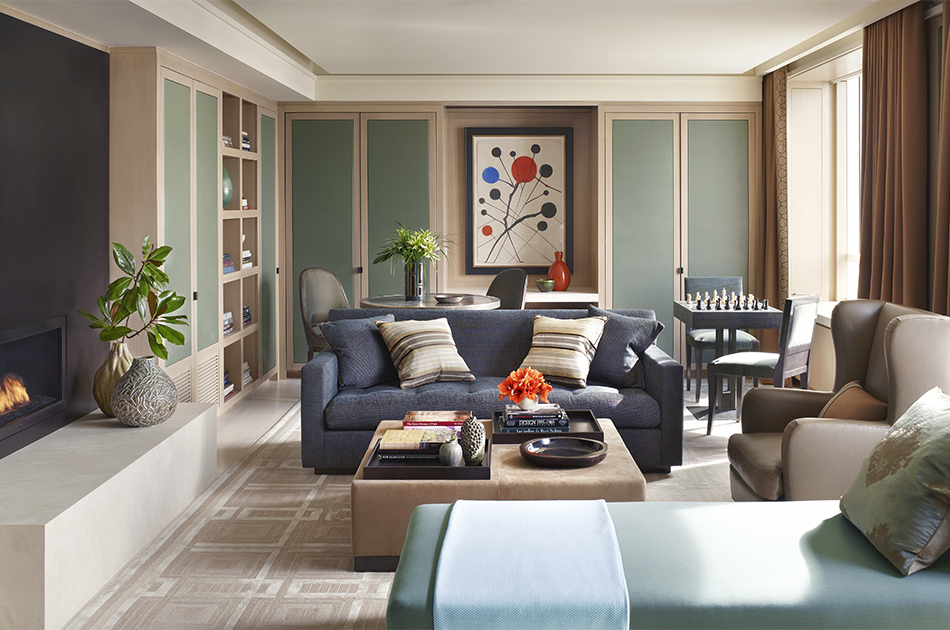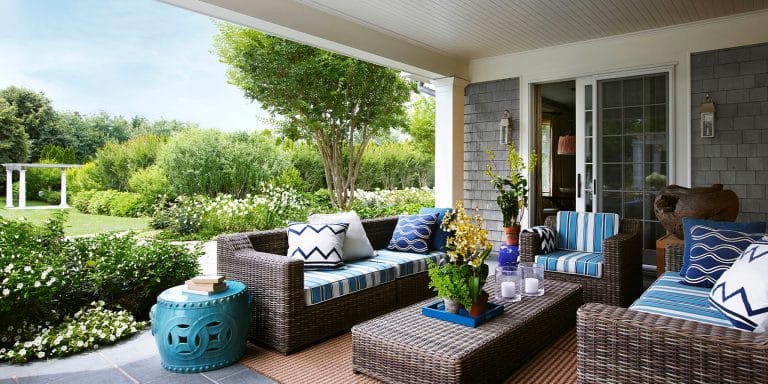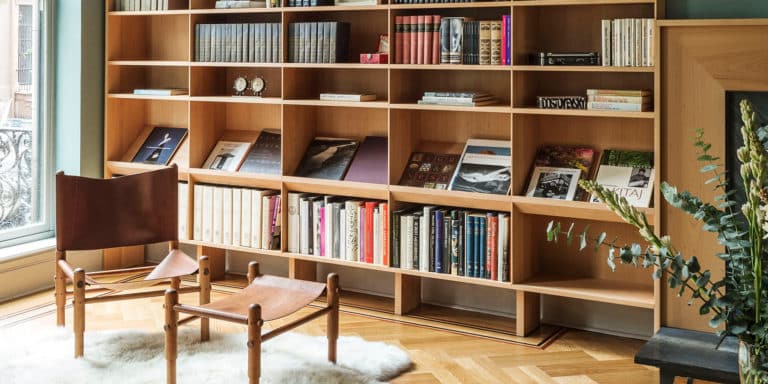
January 22, 2014An industry veteran, Sandra Nunnerley has just released her first monograph (photo by Richard Corman). Above: In a New York apartment, a Fernand Léger painting hangs above a Borsani console (photo by Durston Saylor). All photos courtesy of powerHouse
I was at the stage of my career when I just thought it was time,” says New York–based decorator Sandra Nunnerley, casually explaining her decision to release a design monograph now, after more than two decades in the business. “What’s more, people kept asking me for a book,” she adds with a laugh.
Nunnerley reveals all this while signing copies of Sandra Nunnerley: Interiors (powerHouse) during a packed book-launch party at Phillips, the Manhattan auction house. It’s easy to see why the book — not to mention Nunnerley herself — attracts such a crowd: With its thoughtful presentation, lush imagery by a variety of photographers and intelligent text (written with the help of Christine Pittel), Interiors stands out, even amid the recent bumper crop of design-focused publications. “How the photographs looked on the page was very important to me,” Nunnerley explains. “I wanted it to feel very luxurious — and inspirational.”
Regularly featured in Architectural Digest during its years under legendary editor Paige Rense (and still today under Margaret Russell), Nunnerley’s decorating work continues to surprise with its timeless elegance. Alexandra d’Arnoux, a longtime editor of French Architectural Digest, writes in the book’s foreword that Nunnerley’s “background in architecture and fine arts gives a true depth to her work,” and that statement perhaps best sums up what is one of Nunnerley’s greatest strengths: that rare ability to incorporate serious art into comfortable and luxurious rooms.
Born in New Zealand, Nunnerley left home for art school in Sydney, later spending time in London and Paris, where she studied art history. Hearing the siren call of the art world in the 1980s, she next made her way to New York, working at the Marlborough Gallery and befriending such art-world legends as Leo Castelli and Holly Solomon.

In the bedroom of a home facing the Chesapeake Bay, in Maryland, two hand-forged iron canopy beds divide the space into separate realms, while Chun-yi Lee’s Hundreds of Blooms offers a feeling of expansiveness. Photo by Miguel Flores-Vianna
In 1986, in a mood to expand her horizons, Nunnerley opened her first design office. “I found that interior decorating brought together everything that I loved,” she says, “architecture, travel, design and art.”
Sandra Nunnerley: Interiors contains projects from throughout her career — from her earliest work to her own, more recent apartment. They’re not organized chronologically, however, but by the mood each interior elicits. A chapter called “Serenity” focuses on aspects of Nunnerley’s own art-filled Upper East Side apartment, which takes its calm cues from the designer’s trips to Tibet. (Like many of today’s most successful decorators, Nunnerley plainly credits her inspiration to her world travels.) Turn the page to “Individuality,” and you can admire her unique ability to gracefully and harmoniously balance art and interior design on a much larger scale: an awe-inspiring country house built for passionate art and design collectors. Here, a living room sofa by Vladimir Kagan sits unobtrusively under a large Conrad Marca-Relli abstract painting, visually linked by shape to an Alberto Giacometti ceiling light. Leading upstairs from the same room is an astonishing cast-bronze staircase railing by Michele Oka Doner, which mimics the cellular structure of sea grass.
“Clarity,” meanwhile, opens with a photo of the luxury liner Queen Mary 2, to set the stage for a New York apartment with expansive views of the city’s harbor. Here, Nunnerley created a shipboard Art Moderne feeling, bringing in glamorous materials like shagreen, pear wood and polished nickel as a backdrop to artworks by Alexander Calder, Fernand Léger and Ed Ruscha.
In her introduction, Nunnerley suggests that the spirit of her style “has something to do with jazz.” And in the lively and layered projects that fill Interiors’s 200-plus pages, one can see how apt a metaphor this is. As Nunnerley goes on to write, “Jazz is all about improvisation and the ability to react spontaneously, to invent and to explore. I like to think that I’ve applied that same freedom to design.”










